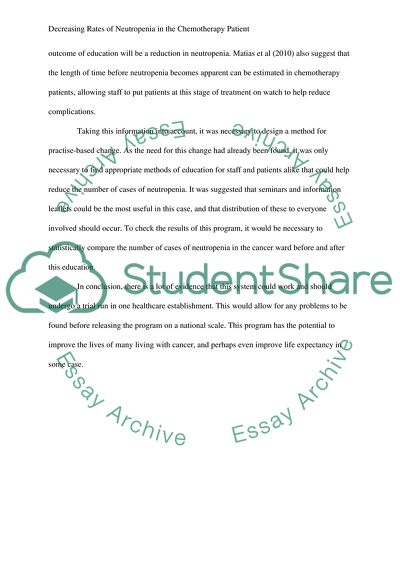Decreasing Rates of Neutropenia in the Chemotherapy Patient Research Paper - 1. Retrieved from https://studentshare.org/nursing/1584976-decreasing-rates-of-neutropenia-in-the-chemotherapy-patient
Decreasing Rates of Neutropenia in the Chemotherapy Patient Research Paper - 1. https://studentshare.org/nursing/1584976-decreasing-rates-of-neutropenia-in-the-chemotherapy-patient.


